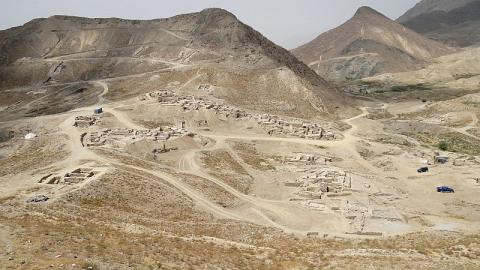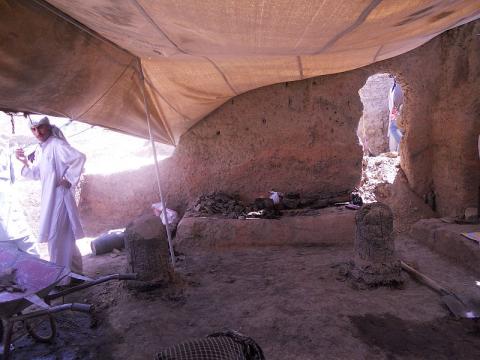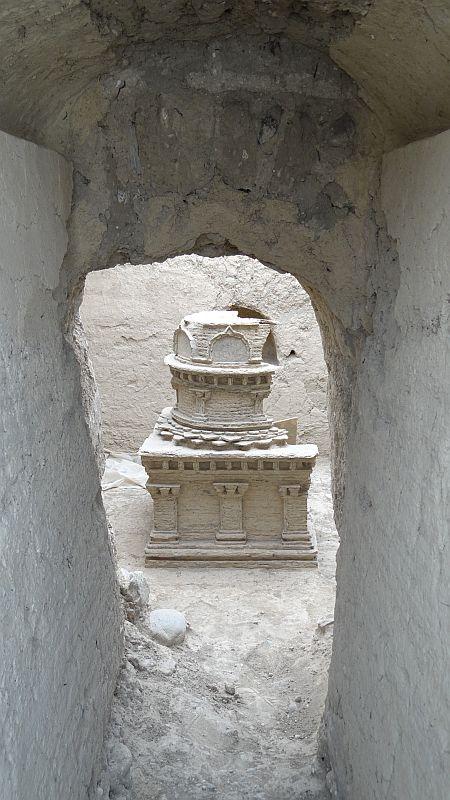The impressively large site of Mes Aynak lies in Logar (Afghanistan), about 30 km south east of Kabul, and is currently the object of excavation in the framework of rescue archaeology. The site, which is situated on the world’s second-largest copper reserve, is soon destined to become a giant open-cast mine. A thirty-year lease for the copper mine was granted to the China Metallurgical Group Corporation in 2007, and in a race against time the Afghan Institute of Archaeology, with the support of the Délégation Archéologique Française en Afghanistan (DAFA), launched rescue excavations in 2009. The initial archaeological plan has recently been extended, but the economic importance of the mining project represents an extremely difficult challenge to the proper scientific investigation and preservation of the site.
So far, several Buddhist settlements, with stūpas (Fig. C), chapels (Fig. B) and monastic quarters, provisionally dated between the 5th and 9th century, have been partially excavated; however, an unknown quantity of other sites, including civil and religious centres, as well as workshop areas, are still hidden beneath the numerous archaeological mounds stretching as far as the eye can see.
Abundant archaeological traces indicate that the metal resources of the site were already exploited in ancient times, and it is very likely that the Buddhist monastic communities themselves held some sort of right to them.
The Buddhist cultic areas are embellished with lavish painted and sculpted decoration of high artistic quality; characterised by the generous use of perishable materials such as clay and wood for both architecture and decoration, these are exceptionally well preserved in comparison with other similar sites. The number of wooden artefacts recovered, such as small statues, carved and painted architectural elements, and framework, is especially remarkable in this regard. The sculptures in polychrome clay are often partially gilded. In several instances, colossal figures are assembled in relatively small spaces to form some a coherent group (Fig. D); however, their interpretation is hindered by their only partial preservation. Whatever the exact meaning, a striking recurrent pattern is the disproportion between the colossal size of the images and the narrowness of their architectural settings. This disproportion, certainly intentional, can be considered an integral part of the contextual concept of worship.




_0.jpg%3Fitok=ydFSOTTy)